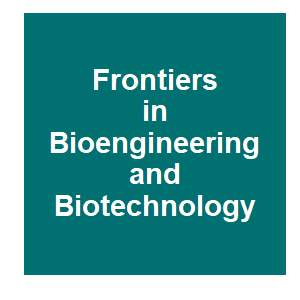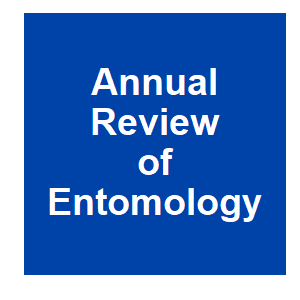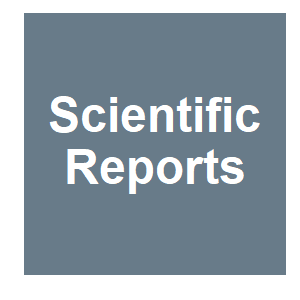
Keywords: trojan female

|
Genetic Biocontrol for Invasive SpeciesJ. L. Teem, L. Alphey, S. Descamps, M. P. Edgington, O. Edwards, N. Gemmell, T. Harvey-Samuel, R. L. Melnick, K. P. Oh, A. J. Piaggio, J. R. Saah, D. Schill, P. Thomas, T. Smith and A. Roberts, Frontiers in Bioengineering and Biotechnology, 8:452. 2020.
Invasive species are increasingly affecting agriculture, food, fisheries, and forestry resources throughout the world. As a result of global trade, invasive species are often introduced into new environments where they become established and cause harm to human health, ... Keywords: autocidal, gene drive models, gene drive natural, gene drive synthetic, Mitochondria, SIT, sterile insect technique, trojan female |

|
The association between mitochondrial genetic variation and reduced colony fitness in an invasive waspJ. Dobelmann, A. Alexander, J. W. Baty, N. J. Gemmell, M. A. M. Gruber, O. Quinn, T. Wenseleers and P. J. Lester, Molecular Ecology, 28:3324-3338. 2019.
Despite the mitochondrion's long-recognized role in energy production, mitochondrial DNA (mtDNA) variation commonly found in natural populations was assumed to be effectively neutral. However, variation in mtDNA has now been increasingly linked to phenotypic variation in life ... Keywords: autocidal, gene drive models, gene drive natural, gene drive synthetic, Mitochondria, SIT, sterile insect technique, trojan female |

|
Invasion Success and Management Strategies for Social Vespula WaspsP. J. Lester and J. R. Beggs, Annual Review of Entomology, 64:51-71. 2018.
Three species of Vespula have become invasive in Australia, Hawai'i, New Zealand, and North and South America and continue to spread. Economically, their main negative effect is associated with pollination and the apicultural industry. Climate change is likely to exacerbate ... Keywords: autocidal, gene drive models, gene drive natural, gene drive synthetic, Mitochondria, SIT, sterile insect technique, trojan female |

|
Trojan Females and Judas Goats: Evolutionary Traps as Tools in Wildlife ManagementB. A. Robertson, R. S. Ostfeld and F. Keesing, Bioscience, 67:982-993. 2017.
Here, we bring together science from the pest-control, eco-evolutionary, and conservation communities to outline how evolutionary traps can be repurposed to eliminate or control pest species. We highlight case studies and devise strategies for the selection of appropriate cues to ... Keywords: autocidal, gene drive models, gene drive natural, gene drive synthetic, Mitochondria, SIT, sterile insect technique, trojan female |

|
Mitonuclear interactions, mtDNA-mediated thermal plasticity, and implications for the Trojan Female Technique for pest controlJ. N. Wolff, D. M. Tompkins, N. J. Gemmell and D. K. Dowling, Scientific Reports, 6. 2016.
Here we test whether the male-sterilizing effects previously associated with the mt: Cyt-b mutation are consistent across three thermal and three nuclear genomic contexts. The effects of this mutation were indeed moderated by the nuclear background and thermal environment, but ... Keywords: autocidal, gene drive models, gene drive natural, gene drive synthetic, Mitochondria, SIT, sterile insect technique, trojan female |

|
The Trojan Female Technique for pest control: a candidate mitochondrial mutation confers low male fertility across diverse nuclear backgrounds in Drosophila melanogasterD. K. Dowling, D. M. Tompkins and N. J. Gemmell, Evolutionary Applications, 8:8710880. 2015.
The Trojan Female Technique (TFT) was recently proposed as a prospective approach to biological pest control. However, applicability of the TFT relies on mitochondrial mutations whose male-sterilizing effects are general across nuclear genomic contexts. We test this assumption, ... Keywords: autocidal, gene drive models, gene drive natural, gene drive synthetic, Mitochondria, SIT, sterile insect technique, trojan female |

|
The Trojan female technique: a novel, effective and humane approach for pest population controlN. J. Gemmell, A. Jalilzadeh, R. K. Didham, T. Soboleva and D. M. Tompkins, Proceedings of the Royal Society B: Biological Sciences, 280:20132549. 2013.
We use mathematical models to test a new twist on the SMT, using maternally inherited mitochondrial (mtDNA) mutations that affect male, but not female reproductive fitness. ‘Trojan females’ carrying suchmutations, and their female descendants, produce ... Keywords: autocidal, gene drive models, gene drive natural, gene drive synthetic, Mitochondria, SIT, sterile insect technique, trojan female |

Contact
David O’Brochta
Foundation for the
National Institutes of Health
geneconvenevi@fnih.org
RSS

